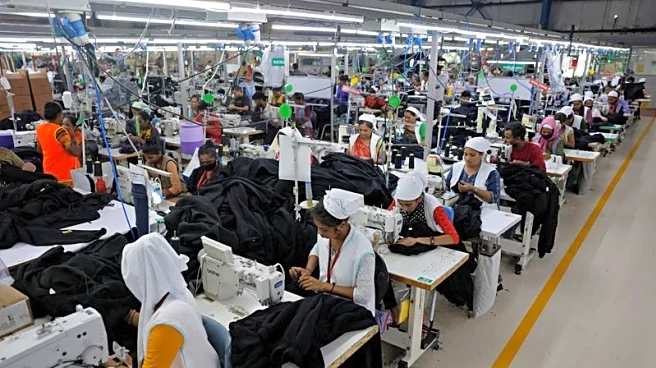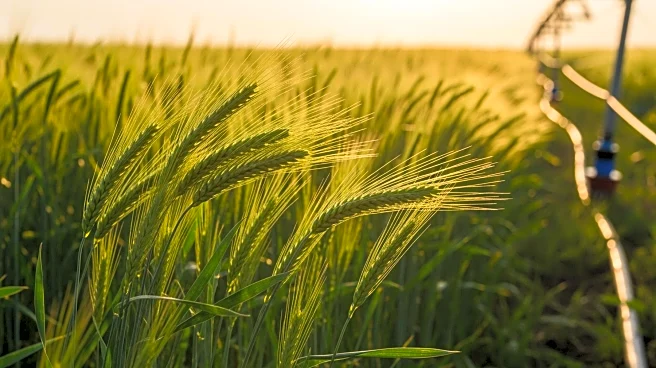What's Happening?
A panel discussion organized by the PHD Chamber of Commerce and Industry (PHDCCI) focused on the future of the agriculture warehouse market in India from 2025 to 2030. The event, held on November 20, 2025, in New Delhi, addressed the need for modern storage
infrastructure to support India's growing agricultural production, which is expected to reach 368 million tonnes by 2030-31. Key speakers, including Prof. Ramesh Chand from NITI Aayog and Dr. Shailja Vaidya Gupta, emphasized the importance of climate-adaptive silos and private sector participation in expanding warehousing capacities. The discussion highlighted challenges such as high insurance costs, GST issues, and the need for technological advancements tailored to specific warehouse needs.
Why It's Important?
The development of India's agricultural warehousing sector is crucial for maintaining food security and stabilizing prices, which are significant components of household consumption. As India's food grain production continues to rise, the demand for efficient storage solutions becomes more pressing. The panel's insights into climate-adaptive storage and private sector involvement could lead to improved logistics and regulatory environments, enhancing the sector's viability. This growth is expected to attract investment and drive economic development, positioning India as a global leader in agricultural production and storage solutions.
What's Next?
The panel recommended further analytical reports and workshops to address cold storage needs and other warehousing dimensions. Collaboration with NITI Aayog and government ministries is anticipated to refine policies and encourage private investment. The adoption of advanced technologies like IoT-based climate monitoring and blockchain for traceability is expected to shape the future of grain management in India. These initiatives aim to bridge the projected storage deficit and unlock significant opportunities for private players in the market.
Beyond the Headlines
The discussion underscored the need for a robust agri-logistics backbone to enhance efficiency across value chains. The focus on digitization and integration of private and public warehousing capacities could minimize losses and create a resilient system. The concept of blended finance was highlighted as a promising approach to address geographic distribution and climate risks, potentially transforming the financial landscape of the warehousing sector.















